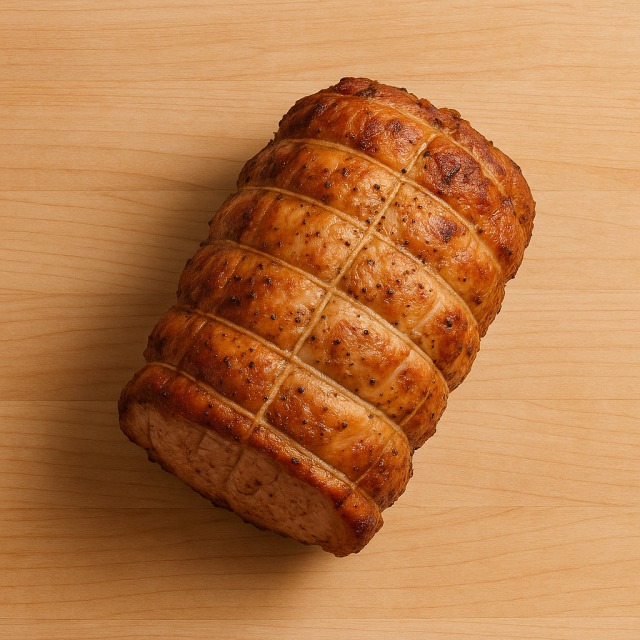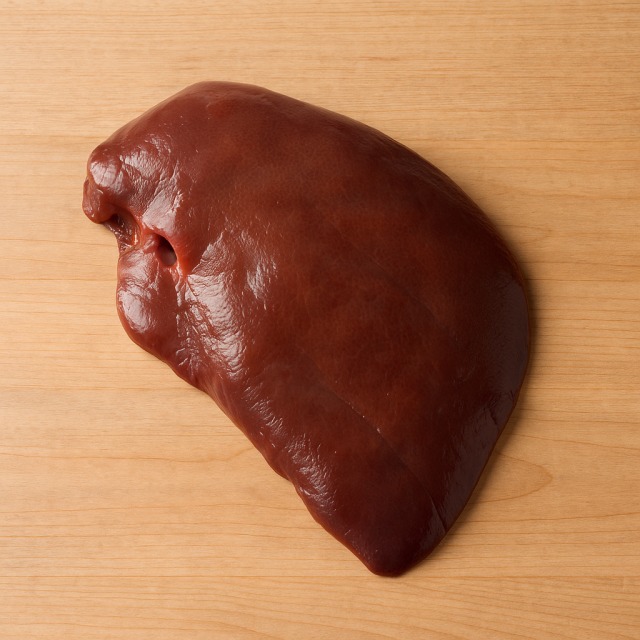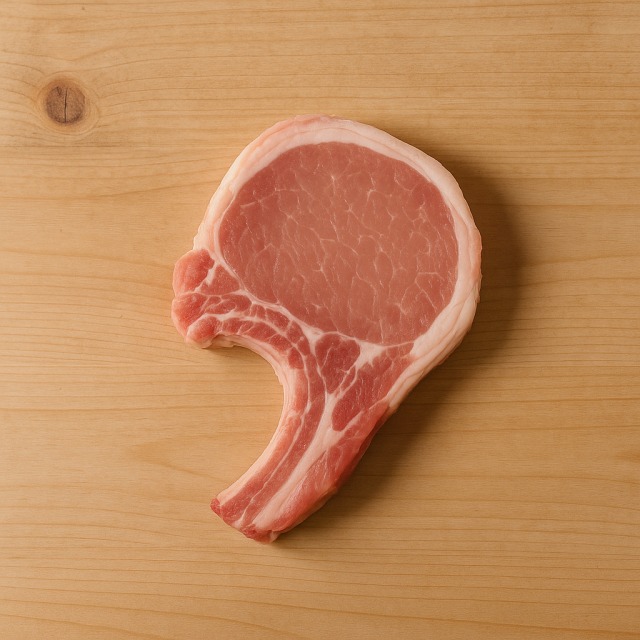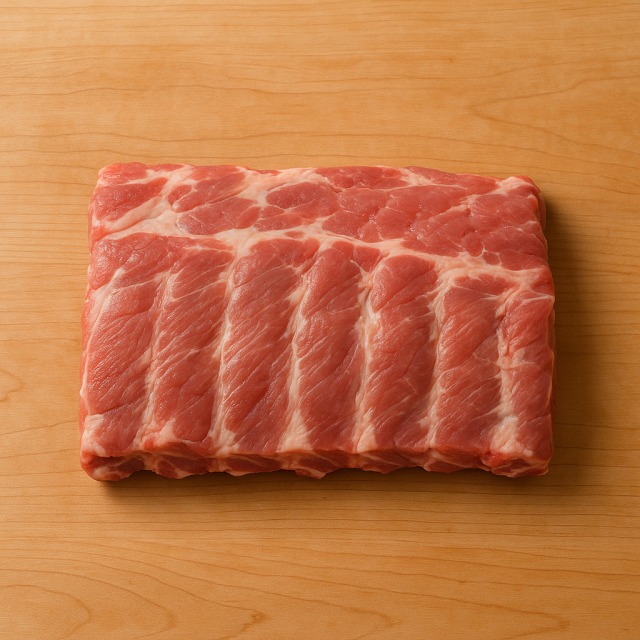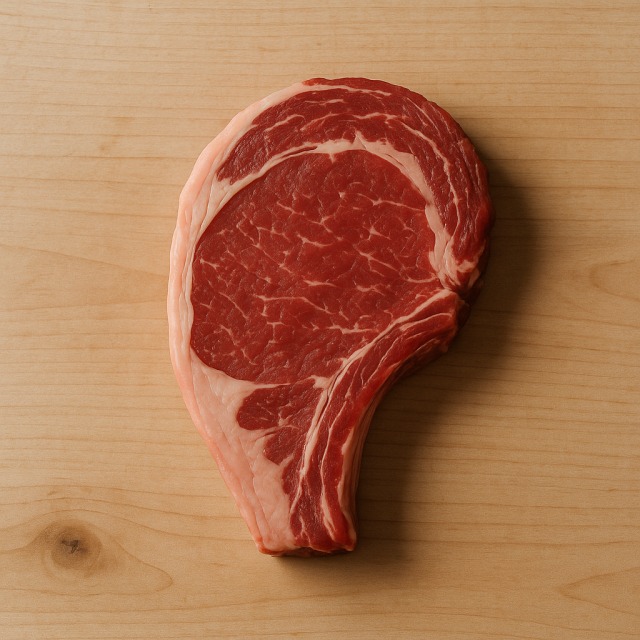Calorie Chart / Meat & Eggs / Pork neck
How Many Calories Are in Pork neck?
Calculation of the nutritional value & Recommended Dietary Intake of pork neck
For g and a calorie requirement of kcal
| Calories 386 kcal | Proteins 26 g | Lipids 32 g | Carbohydrates 0 g |
| 19% | 35% | 48% | 0% |
Health benefits of pork neck

Pork neck - 100g
Calories 257 kcal
Proteins 17 g
Lipids 21 g
Carbohydrates 0 g
With around 257 kcal per 100 g, pork neck is considered a high-calorie cut of meat. These calories mostly come from its rich marbling, which provides both energy and flavor. For people who need to increase their calories—such as athletes in a bulking phase—pork neck can be useful, while those limiting calories will need to watch their portion sizes.
Beyond calories, pork neck supplies roughly 17 g of protein per 100 g, contributing to muscle maintenance. It is also an excellent source of B-vitamins, especially thiamine (B1), niacin (B3), and vitamin B6, which help convert the calories you eat into usable energy. Significant amounts of vitamin B12 support red blood cell formation.
Mineral-wise, the cut provides zinc (immune health), phosphorus (bone health), and selenium (antioxidant function). Its natural collagen turns into gelatin during slow cooking, adding texture without extra calories and delivering glycine, an amino acid often highlighted for supposed joint benefits (evidence still limited, hence "supposed").
Historically, pork neck—sometimes labeled "Boston butt" or "collar"—was valued by charcutiers for its balance of fat and lean. It appears in traditional dishes such as German Schweinenackenbraten and southern U.S. pulled pork. Knowing this heritage can help you understand why the calorie and lipid profile differs from leaner pork cuts.
Tips for incorporating pork neck into a balanced diet
The key to enjoying pork neck without exploding your daily calories is smart pairing and cooking. Slow-cook it with plenty of spices, then shred and serve in whole-grain tortillas alongside grilled bell pepper and crunchy cabbage slaw; the vegetables add volume without many calories and balance the richness.
For an Asian-inspired bowl, roast thin slices of pork neck, drizzle with a light soy sauce glaze, and plate over steamed rice plus a heap of sautéed broccoli. This keeps the meal satisfying, distributes calories more evenly, and supplies fiber.
If you crave comfort food, cube the meat and simmer it into a tomato-based ragù, then spoon it over quinoa or pair it with a side of Provençal ratatouille. The aromatic vegetables let you enjoy flavor while helping control calories per serving.
General tips: trim visible fat before cooking to shave off calories; favor dry rubs over sugary marinades; and use a food scale so the calories you log for pork neck match reality. By rounding out the plate with low-calorie vegetables and complex carbs, you keep the overall calories of the meal in check.
Frequently Asked Questions
- How many calories are in pork neck?
- There are 257 kcal per 100 g.
- Is pork neck suitable for a high-protein diet?
- Yes. With about 17 g of protein per 100 g, pork neck delivers solid protein alongside its calories, making it comparable to cuts like beef steak but with more fat.
- How can I reduce the calories when cooking pork neck?
- Trim external fat, opt for dry-heat methods such as oven roasting on a rack so excess fat drips away, and bulk up the dish with low-calorie sides like zucchini ribbons or a fresh lettuce salad.
- Does slow cooking increase the calories?
- No, slow cooking only redistributes existing fat; the calories remain the same unless you add high-calorie ingredients such as oil or sugar-based sauces.
- How does pork neck compare with pork tenderloin in calories?
- Pork tenderloin averages around 160 kcal per 100 g, significantly fewer calories than pork neck's 257 kcal, because tenderloin contains much less fat.
Similar foods
Information provided by Calorie Menu may contain inaccuracies or errors. It cannot, under any circumstances, substitute medical advice or medication.

